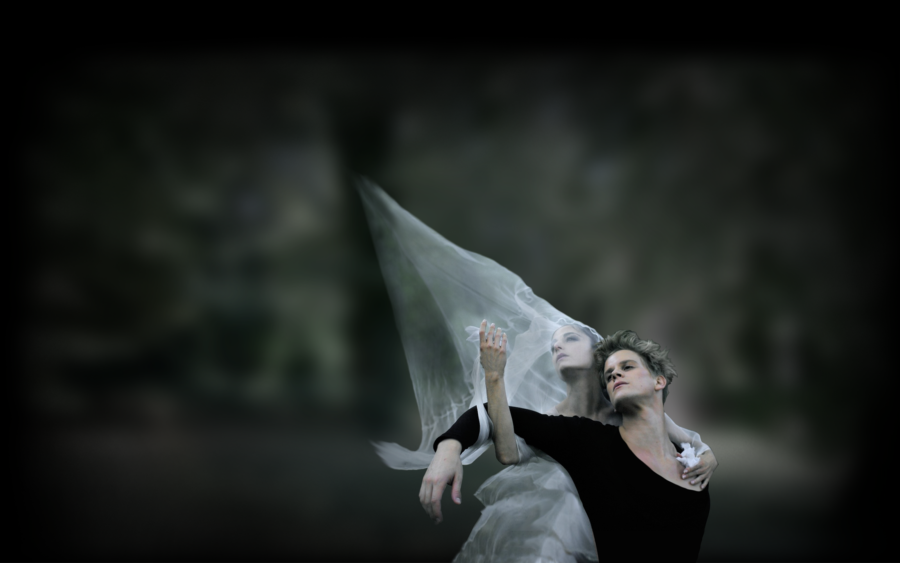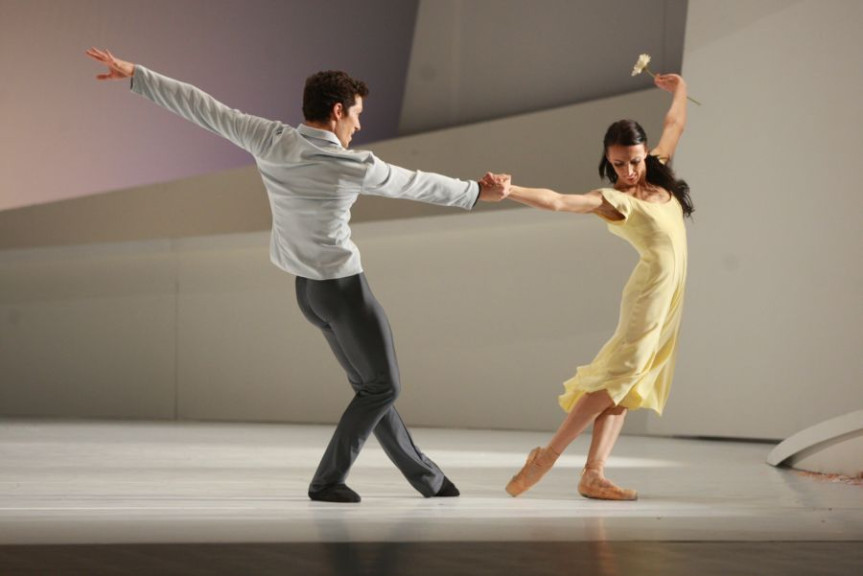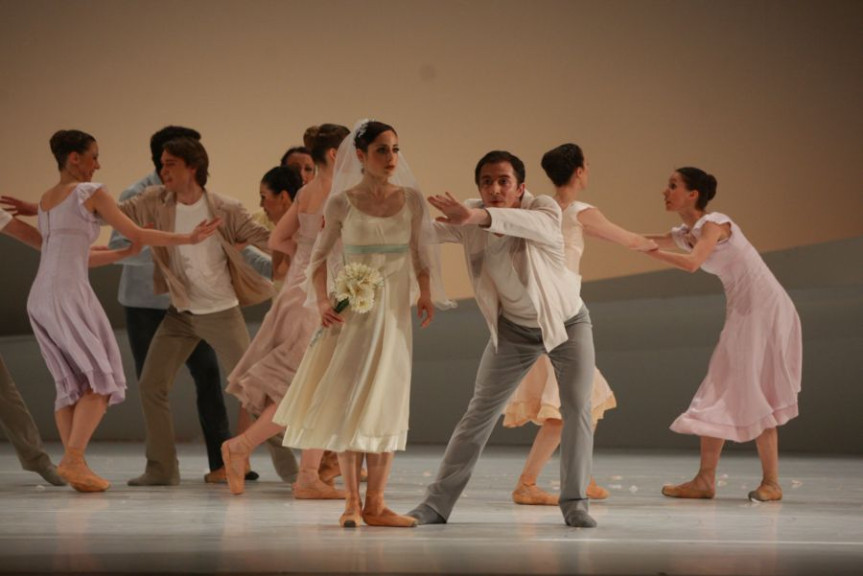
Adolphe Adam / David Coleman
Giselle
Balet v dveh dejanjih v koreografiji, zasnovi in režiji Davida Dawsona
Buy tickets
Minilo je že več kot 160 let, odkar velja Giselle za nesporno mojstrovino klasičnega romantičnega baleta. David Dawson, eden najbolj vznemirljivih koreografov današnjega časa, izloči to večno zgodbo iz časovne pogojenosti 19. stoletja, zato da bi jo raziskal znotraj njene brezčasnosti skozi jezik sodobnega klasičnega baleta, podoživljajoč magično paleto čustev, ki jo nudita tako klasični balet kot zgodba o čisti ljubezni.
Giselle je delo, ki si prizadeva raziskati idejo ljubezni kot nekaj običajnega in neobičajnega hkrati. Opraviti imamo z ljubeznijo, ki s seboj prinaša žrtvovanje in odgovornost – gre za verovanje, ki se prenaša iz roda v rod, da posledice izdaje niso nič več zgolj osebne ali začasne, marveč univerzalne in večne. Tako se Giselle sooči s posmrtnim življenjem, polnim maščevanja, ki jo postavi pred že kar pregovorno odločitev, globoko vsajeno v brezčasno vprašanje iz klasične književnosti: pravičnost ali usmiljenje? Ključ do kakršnega koli tolmačenja ene največjih ženskih vlog klasičnega kanona leži prav v načinu, kako se Giselle odloči. Res je, da se je na zunaj spremenila v vilo, ne pa tudi v srcu. In če je Albrecht svoje srce našel tako, da je žrtvoval njenega, nas mora Giselle prepričati s popolno plemenitostjo svojega duha. Ne reši le njega. S tem da se odpove maščevanju in ostane zvesta sebi, reši predvsem sebe. Le z Gisellino smrtjo je Albrechtu dano, da začuti življenje v vsej njegovi čistosti in strasti. V enem samem trenutku se življenje in smrt izravnata in postaneta eno. Za Dawsona so Giselle, Albrecht in drugi liki ljudje, ki jih krasi njihova mladost, saj živijo življenja, primerljiva z življenji plesalcev, ki jih upodabljajo. Ne le da zgodbo in njene osebnosti iztrga iz njihovih časovnih okvirov, ponudi tudi svojo interpretacijo načel klasičnega baleta skozi lastno koreografsko stilistiko, raziskuje sožitje minulih in sedanjih plesnih tehnik, v katerih se preciznost in rafiniranost klasičnega baleta spretno prepletata z vzorcem nepretrganih zaporedij izbranih kombinacij gibov, uprizorjenih v brezmejnem prostoru. Ideja univerzalnosti in brezčasja se nadalje zrcali v popolnoma novi orkestraciji in predelavi Adamove izvirne partiture, pod katero se je podpisal David Coleman, v novi in čisti scenografiji Arna Waltherja, večni preprostosti oblik in kostumov Jumiko Takešime in v nasprotujočih si razpoloženjih večno spreminjajočega se neba, ki ga pričara luč Berta Dalhuysena.
Dawsonova Giselle je predstava, ki jo odlikujeta tako edinstvenost kot inovativen pristop. David Dawson, ki tudi tokrat ostaja zvest sebi in svojemu slogu, nam ponuja izvirno koreografijo, v kateri nazorno razkriva vir svojega navdiha.
Artists
- Koreografija, zamisel in odrska postavitev: David Dawson
- Glasba: Adolphe Adam, v priredbi Davida Colemana
- Dirigent Marko Gašperšič
- Kostumografija Jumiko Takešima
- Scenografija Arne Walther
- Lučno oblikovanje Bert Dalhuysen
- Dramaturgija Freya Vass - Rhee
- Asistenta koreografa Tim Couchman, Rebecca Gladstone
- Baletna mojstrica Maša Mukhamedov
- Asistenti Viktor Isajčev, Sanja Nešković Peršin, Stefan Capraroiu, Claudia Sovre
- Koncertni mojster Igor Grasselli
Zasedba:
- Giselle Ana Klašnja / Tjaša Kmetec / Rita Pollacchi
- Albrecht Petar Đorčevski / Lucas Jerkander / Lukas Zuschlag
- Hilarion Alexandru Barbu / Iulian Ermalai
- Bathilde Regina Križaj / Sanja Nešković Peršin / Urša Vidmar
- Nevesta Ana Klašnja / Rita Pollacchi / Lejla Pantić Šindrić
- Ženin Petar Đorčevski / Lucas Jerkander
- Priča Kenta Jamamoto / Luka Žiher
- Družici Kristina Aleksova, Lejla Pantić Šindrič / HyeMin Kim, Barbara Potokar
- Prijateljice Eva Gašparič, HyeMin Kim, Nina Ogrinc, Barbara Potokar, Urša Vidmar / Kristina Aleksova, Sorina Dimache, Mariša Nač, Lejla Pantić Šindrić, Tasja Šarler
- Prijatelji Cosmin Agavriloaei, Gaj Rudolf, Ivan Greguš / Gregor Guštin
- Bathildino spremstvo Juki Seki, Lukas Zuschlag, Luka Žiher / Kenta Jamamoto, Lucas Jerkander
- Mirtha Tjaša Kmetec / Regina Križaj
- Vile Kristina Aleksova, Georgeta Capraroiu, Eva Gašparič, HyeMin Kim, Ksenija Kovač, Sonja Kerin Krek, Barbara Marič, Barbara Potokar, Lejla Pantić Šindrić, Gabriela Stojanova Čauševa, Urša Vidmar / Sorina Dimache, Romana Kmetič, Olga Kori, Mariša Nač, Nina Ogrinc, Tasja Šarler
Orkester SNG Opera in balet Ljubljana




